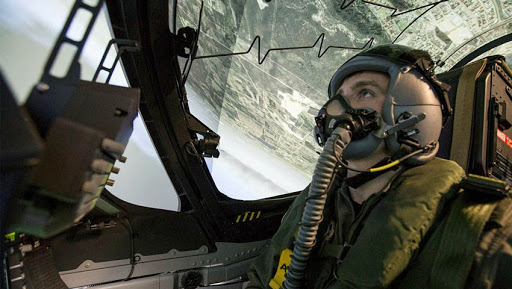The installation of eye and head tracking sensor technologies have been successfully demonstrated in the Hawk-127 lead-in-fighter flight simulators as part of the Jericho Dawn Program, at No. 76 Squadron, RAAF Base Williamtown.
To continue reading the rest of this article, please log in.
Create free account to get unlimited news articles and more!
The technology allows fighter instructors to monitor a student pilot's point of gaze, dwell time and gaze pattern, which can then be analysed to identify poor scanning technique and student response time, either live or post-operation.
On observing the new technology, Executive Officer of No. 78 Wing, Wing Commander Christopher Plain, said they could ascertain between novice and expert scan patterns with a Crew Training System (CTS).
“Using CTS, new Hawk-127 pilots can be coached to better perform certain scans, thereby improving performance in mission achievement, efficiency, time to competency, proficiency and safety,” WGCDR Plain said.
The Jericho Dawn Program has been run by the Air Warfare Centre Innovation Hub since 2017, with the opportunity to work with Seeing Machines' CTS identified and initiated by Mark Corbett from the Royal Australian Air Force Institute of Aviation Medicine (IAM).
A Defence and industry collaboration was set up with CAE, Seeing Machines and RAAF IAM, AWC Innovation Hub and Air Combat Group to install the technology in under six months.
“Our focus is to put future innovative capability into the hands of the user as quickly as possible,” Innovation Hub manager Squadron Leader Myles Clarke said.
On completion of the demonstration, No. 78 Wing formally supported the installation of the technology to the next phase, which will see the eye and face tracking installed on the Hawk simulators at Nos. 76 and 79 Squadrons until April 2020.
Over this time, Seeing Machines, No. 78 Wing and IAM will be analysing the data collected to enable the best use of the technology in the training system, with a goal to progress to full capability by 2020.

 Login
Login







